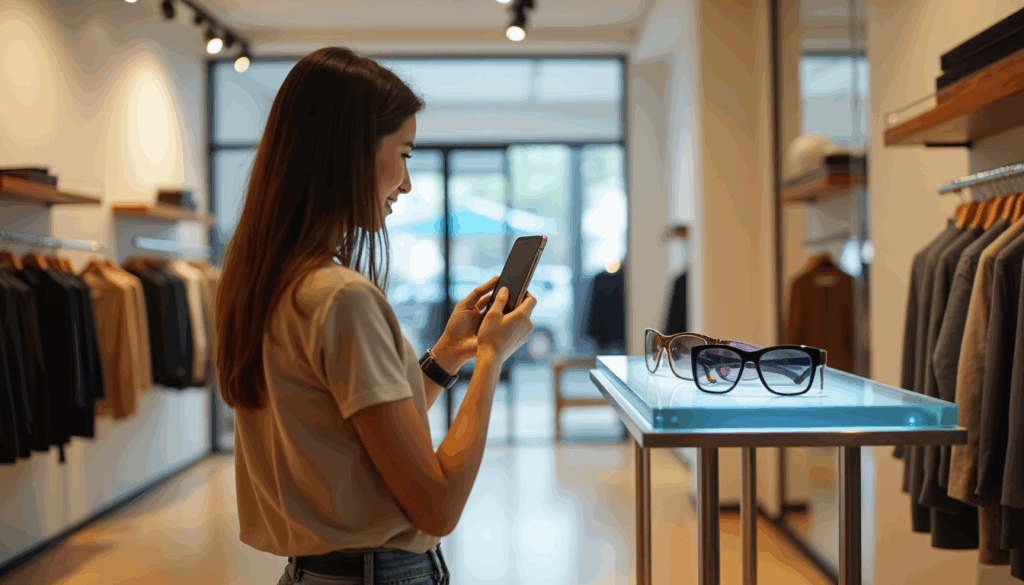AR is reshaping how brands connect with their audiences. Companies report 80% higher sales and better performance metrics after they add AR experiences. Marketing campaigns with AR integration drive an impressive 94% increase in sales conversions, making it a vital tool for modern businesses.
Consumer behavior shows a significant change. About 93% of shoppers want to use AR to find and buy products. GUESS Eyewear, for example, showed AR’s real value when its virtual try-on features drove a 44% boost in engagement rates through 2023.
Understanding Why AR Captures Attention
The human brain shows a powerful response to AR experiences, making it a vital marketing tool today. Consumers often scroll past conventional ads, but AR creates a bridge between the digital and physical worlds. This unique feature changes how customers connect with brands.
Regardless if it is a casino without registration, the fashion industry, or buying a new car, AR marketing works because of compelling psychology. Users’ brains release dopamine and other pleasure-inducing neurotransmitters when they interact with AR marketing. Brands benefit from these positive associations while customers remember them better. Studies reveal AR experiences lead to 70% more memory encoding than traditional static advertisements.

AR stands out because it knows how to grab attention in our distraction-filled world. About 74% of consumers say ads with AR are more likely to catch their interest than standard advertisements. Users spend 5-10 minutes trying out and learning about products in AR. This leads to 40% higher conversion rates.
Popular Ways Brands Use AR in Marketing
Brands are changing how they connect with customers through creative AR technology. Companies now help customers see products before buying them. Warby Parker and IKEA let shoppers preview items in their own space. IKEA’s Place app helps customers position furniture virtually in their homes. This simple change cut product returns by 30% and boosted sales by 80%.
Beauty and fashion brands have jumped on virtual try-ons. L’Oréal teamed up with Perfect Corp to add their makeup lines to the YouCam Makeup app. Christian Dior created Snapchat AR filters that let customers try their B27 sneakers virtually. These filters got 44% more engagement than usual industry numbers.
AR campaigns in public spaces grab attention in amazing ways. Pepsi Max pulled off an unforgettable AR prank at a London bus shelter. Their videos hit 3 million views in a week. Coca-Cola’s #TakeATasteNow campaign did let people use their phones to interact with digital billboards across 13 UK locations and win product vouchers.
How AR Enhances Brand Engagement
Research shows AR’s remarkable power to involve consumers in marketing campaigns. AR ads hold viewer attention for 75 seconds—four times longer than regular mobile video content. Brands can build deeper connections with consumers through this extended interaction time.
Another benefit, people love sharing AR ads. More than half of users share these ads with friends and family. This natural sharing helps brands reach more people while building trust through recommendations.
The sales numbers tell an amazing story. Brands on Shopify saw sales jump up to 250% after adding 3D models in AR. Houzz, the home furnishing company, saw an incredible 11x boost in sales with their AR visualization tools.
AR makes these impressive numbers possible by creating emotional bonds. Unlike regular ads, AR gives users customized experiences that encourage real connections with products. Car brands, to name just one example, let buyers explore and customize cars virtually. This builds excitement and drives sales.
The Strategic Value of AR in Marketing
Smart brands and advertising firms see augmented reality as more than just a trending technology – it’s a key tool in their marketing arsenal. AR helps bridge the gap between our 3D world and 2D digital information. This technology helps companies surpass their competition in ways that go beyond simple innovation.

AR lets brands stand out in busy markets and boosts both customer loyalty and ROI. This difference matters more now as research shows 56% of customers feel more confident about product quality with AR. In fact, 61% choose to shop with stores that offer AR experiences.
Of course, AR’s power to cut product returns adds extra value – many businesses report 30% fewer returns after adding visualization tools.
AR marketing is a great way to get analytical insights about customer behavior. Companies learn about their audience’s priorities by tracking how people interact with AR, how long they use it, and what feedback they give. These insights help create better marketing strategies that keep improving over time.
Conclusion
AR has become a game-changer in modern marketing, with solid proof and real-life success stories backing it up. Brands that use AR have seen amazing results – 80% more sales and 70% better memory recall rates. This advanced technology creates customized interactive experiences that break through digital noise and build real connections with consumers.
Companies that become skilled at using this technology now will definitely have an edge in tomorrow’s marketing world.

